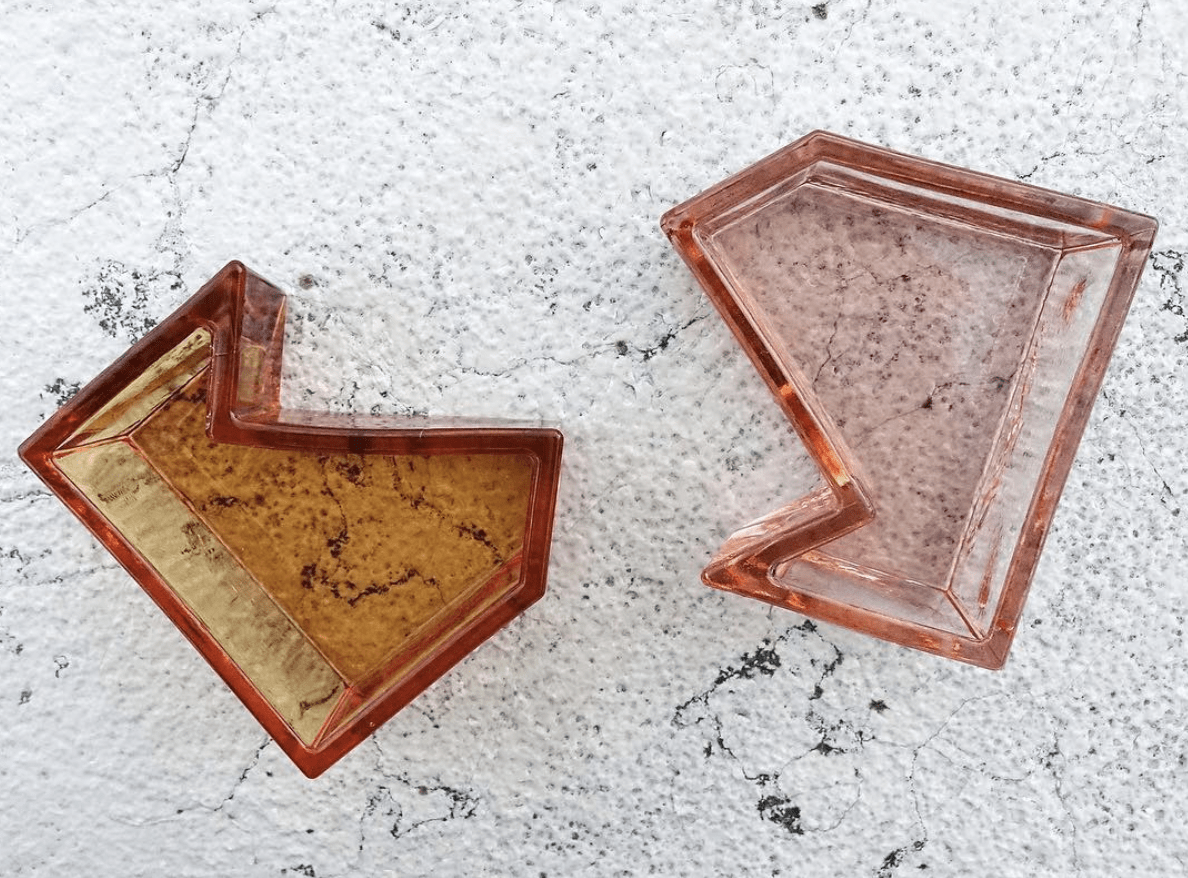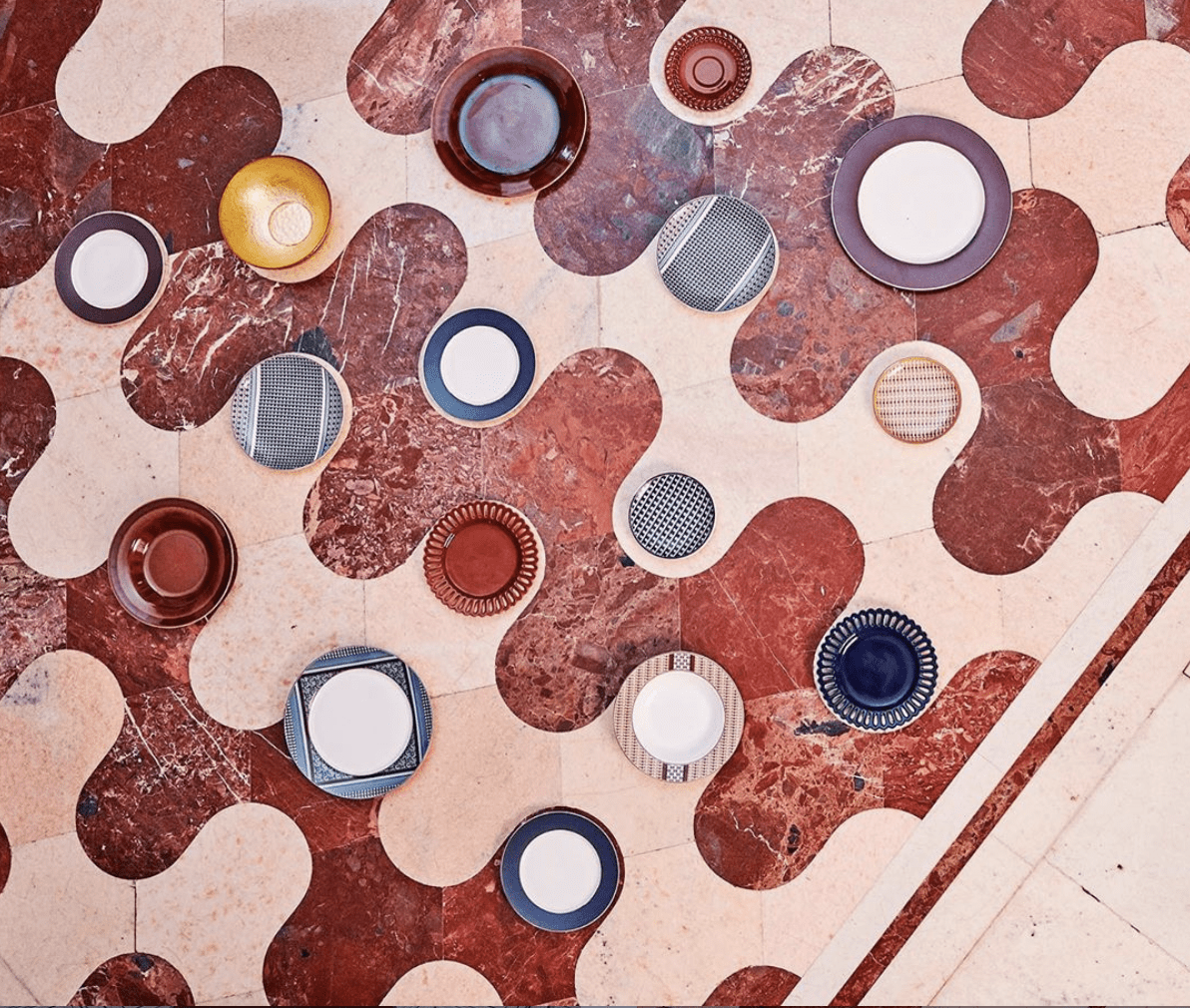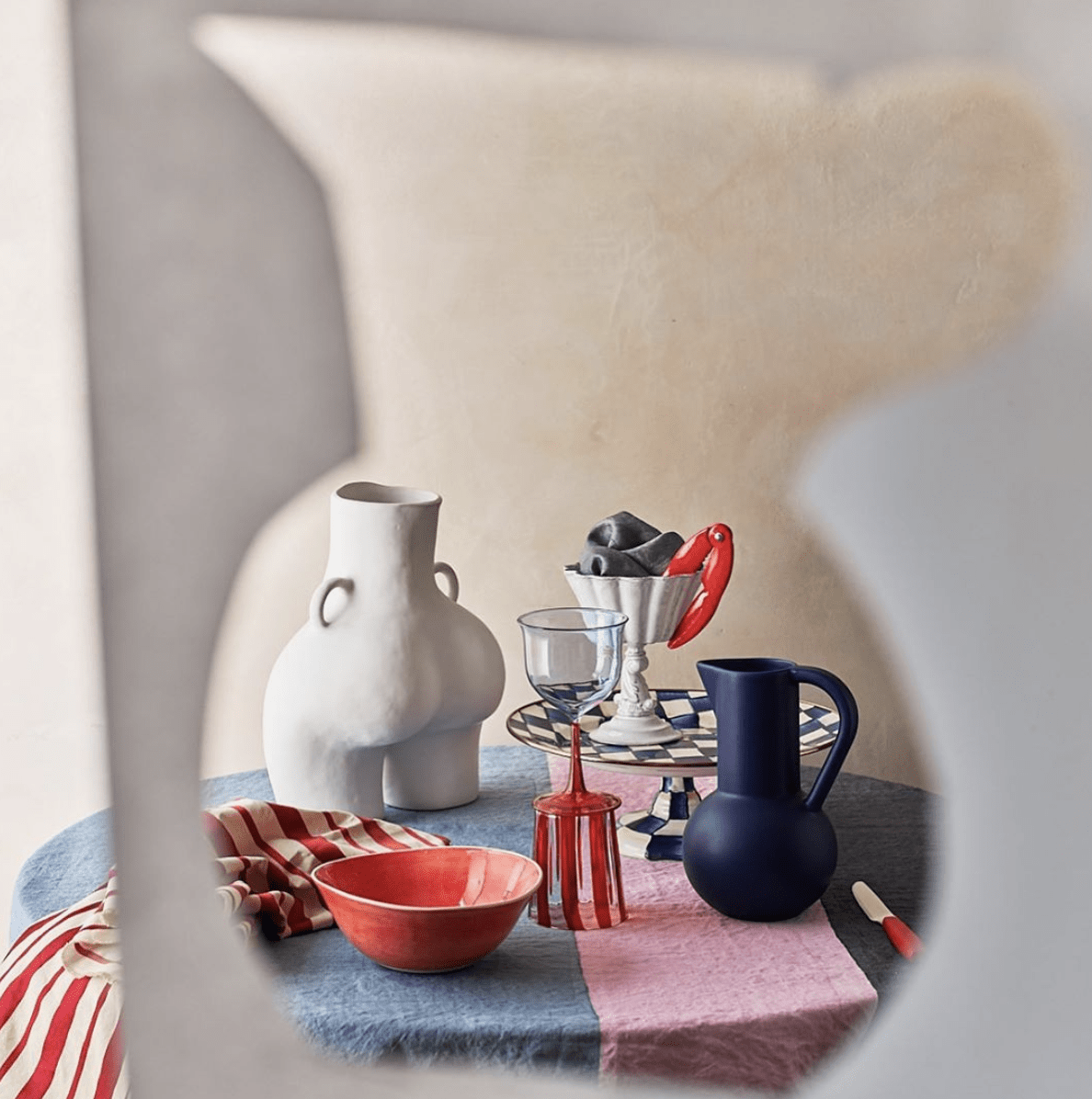The Inspiration Edit: Campbell-Rey

Champions of contemporary maximalism, designers Duncan Campbell and Charlotte Rey of Campbell-Rey explore the congenial mix of materials, influences and techniques to create stunning visual narratives. Drawn to the thoughtful use of materiality, juxtaposition of styles and a touch of the unexpected, the duo has defined a signature vibrant aesthetic.
The pair met in Paris while working for Acne Paper, the biannual culture magazine published by Swedish fashion label Acne Studios. Their editorial curation and visual storytelling garnered attention from brands, prompting them to launch their London-based creative consultancy and design partnership, Campbell-Rey. Working across residential and commercial interior design, creative direction, furniture and product design, Campbell-Rey has attracted an illustrious clientele through their innovative approach to traditional craftsmanship and signature playful aesthetic. Our exclusive collaboration with Campbell-Rey invokes this spirit of bonhomie to bring it into your world of entertaining at home.
Below, the designers discuss their creative process, commitment to preserving and advancing the legacy of craft, and how they find balance between a demanding career and an active personal life.
Campbell-Rey works fluently across projects in the fields of design, creative direction and curation. Tell us about your creative process. To what extent does form influence your approach?
Charlotte: Form is integral to our work, along with materiality, craftsmanship and the way furniture and objects feel when you use them. The different areas we work in (whether that be interior design, creative direction or furniture and industrial design) are in pursuit of the same aesthetic expression. Our references are quite diverse; we love the flair of mid-century Italian design and architecture, the romance of Rococo, the energy of tropical modernism and the restraint of classicism. We love to mix high and low, mixing antique pieces with contemporary design and never being too concerned with good taste. Our work is about juxtaposition, patina, materiality and playfulness, but most of all we want to create interiors that are fun to be in, and objects that are a joy to use.
Duncan: We often say that just because you’re serious about the work, it doesn’t mean the work has to be serious. I would like to think our aesthetic is refined, joyful, a bit sexy sometimes, but also infused with a sense of wit. We love trompe l’oeil and hints of surrealism, so we like to include little surprising moments or unexpected pairings in our interiors. So much of design is obsessed with “good taste” and doing what’s proper, and I think you need something with a bit of a kick to make a room feel exciting. Our references are quite broad, and I think one of our strengths is that we both bring different references to the process. We might be looking at Robert Adam’s plasterwork one moment, and Piero Portaluppi’s use of materials the next. When disparate and seemingly unconnected influences come together, the results can be truly extraordinary.
The combination of craftsmanship, innovation and a sense of playfulness is a through-line in your designs. Do you start by finding the artisans who specialize in a particular craft and create from there? Or is it the other way around?
Duncan: It can work both ways, the creative process is interesting like that, inspiration can come from anywhere. Often we have a very specific design in mind and it can take some time to find the artisans who can execute it properly. We love nothing more than working with very specific skilled makers to realize our vision and hopefully create something people haven’t seen before. On the other hand, once we have made these connections, they can spark all kinds of new ideas based on the specific material or skill that they work with. We’ve been working with Murano glass for a few years now, starting out with drinking glasses and that has lead us to conceive new pieces including vases, a tea set, lighting and furniture, employing the unique skills the craftsmen there possess.
How do you communicate with your collaborators and artisan partners throughout the design process?
Charlotte: We always make a point of visiting the artisan or the factory in person and show them some of our own designs. We talk at length about quality, technique, colors and inspiration to make sure we really understand each other and to see where we innovate and stretch our imagination. Sometimes the maker will require very detailed drawings with dimensions, or sometimes a sketch is enough to interpret our vision. Then it depends a bit on language – Italy, for example, loves to communicate via WhatsApp so often we use that, with messages often including many pasta emojis!
What’s the most surprising or unexpected thing that you’ve learned from your design partners (including each other).
Duncan: From our makers we have definitely learned patience! We live in a world of instant gratification, and many of the artisans we work with have been perfecting their craft for 20 years or more. Good work takes time, and that’s something we have learned to embrace and respect. From Charlotte, I’ve definitely learned to be more focussed and dynamic. Naturally I tend to be quite relaxed and happy to see what will happen, but something I love about our partnership is the way she encourages me to take things up a level and keep our practice moving forward.
Charlotte: From Duncan I’ve certainly learned a special zen, that what is meant to be will be. I sometimes joke that he’s like a little Buddha. From our artisans, I am delighted every time we find someone doing something exceptional within Europe and especially in the UK, as we are based here. It’s wonderful to discover incredible makers who are carrying a tradition or a craft forward.
What’s the Campbell Rey way to use color and print in the home?
Duncan: We often say that if you love something, it will naturally fit together with other things that you love. People are so concerned with whether things ‘go together’ – if they’re matching or if they’re chic. We are naturally very colorful and we love great patterns, so we put them together in ways that feel interesting and that suit the ambience we’re trying to create. Often, a particular space and its possibilities speak to us in their own way – maybe there’s a particular light, a tiled fireplace or an architectural detail that we can play off that. If I’d give advice – I would say be brave! (and avoid grey).
Charlotte: Always invest in quality. It doesn’t matter what color or what pattern you look at, it is equally about the surface it covers. A mustard yellow looks incredible in a Sienna marble or a Dedar velvet fabric, because the quality – the care and the craftsmanship – can be felt with the eye.
Can you share your take on how your home (or surroundings) impact your overall well-being?
Charlotte: In every possible way. We could both sit here forever discussing the importance of space, our surroundings and that special mythical place – home. It is at the core of our practice in so many ways – spatial design is essential for a good life, for bringing people together, for cooking, for relaxing, for love. It’s the setting that cultivates the senses and emotion. It’s the canvas for understanding beauty and history, and your place within it.
If the objects in your home could speak, which would have the best story to tell?
Duncan: On my travels, I have collected so many things that speak of great little adventures and stories. Some of the things we have designed tell the story about where I was in that moment, but I also always manage to come home with silly little things like fridge magnets, or museum shop souvenirs. There’s a little workshop in Venice that makes incredibly lifelike vegetables out of glass. I always come away from there with broad beans or a radicchio leaf that then guests to the house pick up thinking they’re real.
We are always curious about how artists and designers keep their spark and creative drive while running a business. What’s your process for working on yourself while you’re working on your business? In what ways do you invest in yourself?
Charlotte: Having a partner is really wonderful, as we are constant sources of support, inspiration, encouragement and joy for each other. Having worked together for more than ten years, we have become very good at looking out and looking after each other which feels both empowering and calming at the same time. It’s very important to feel supported, understand who or what the positive influences are your life, and be confident and strong in the choices you make and where you put your energy. I am very interested in spiritual development, so I do a lot of yoga, I travel to retreats quite a bit and I exercise a few times a week in order to stay in tune. Being creative, it’s very important to relax as that is when everything you absorb from your experience begins to fall together into new, exciting ways.
Duncan: I try to eat healthy and exercise on a weekly basis. I recently rented a country cottage outside of London, so on the weekends I escape the bustle of the city and spend my time gardening, cooking and taking long walks. I find this to be very relaxing and rejuvenating.








